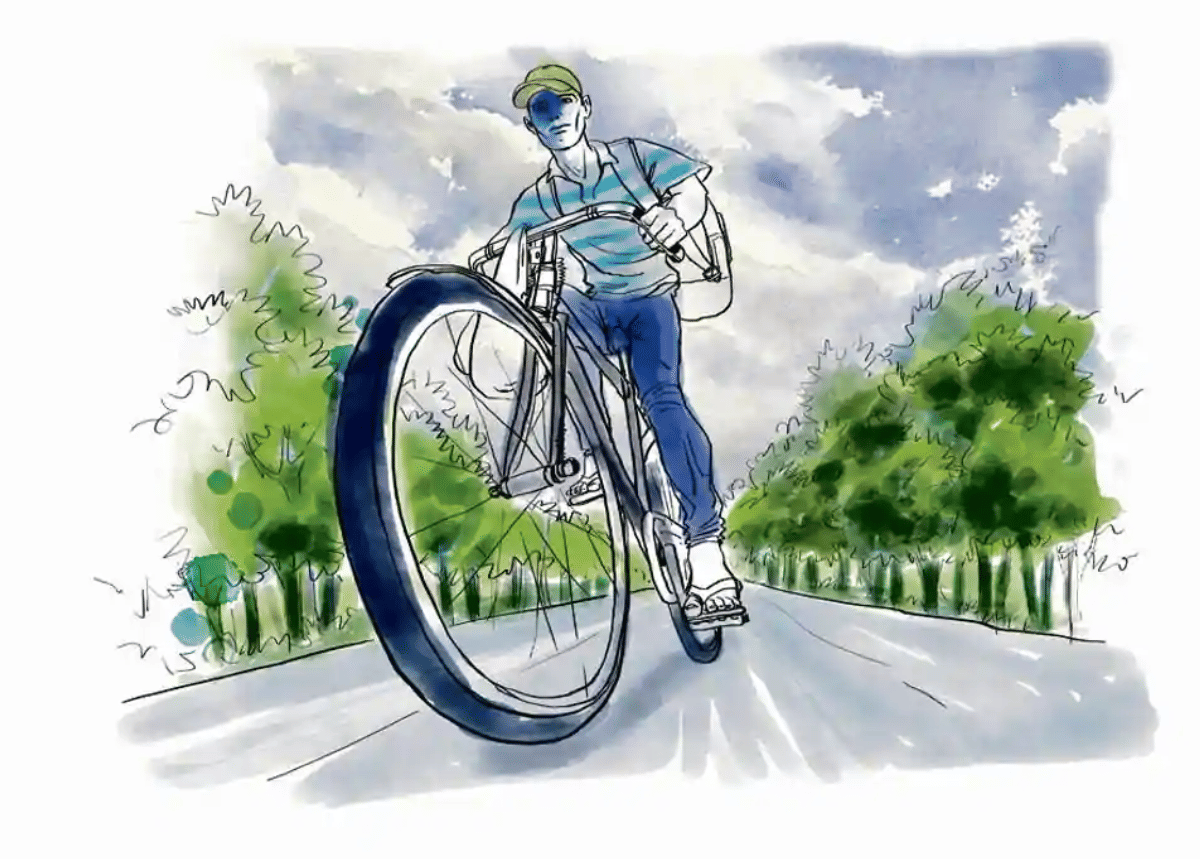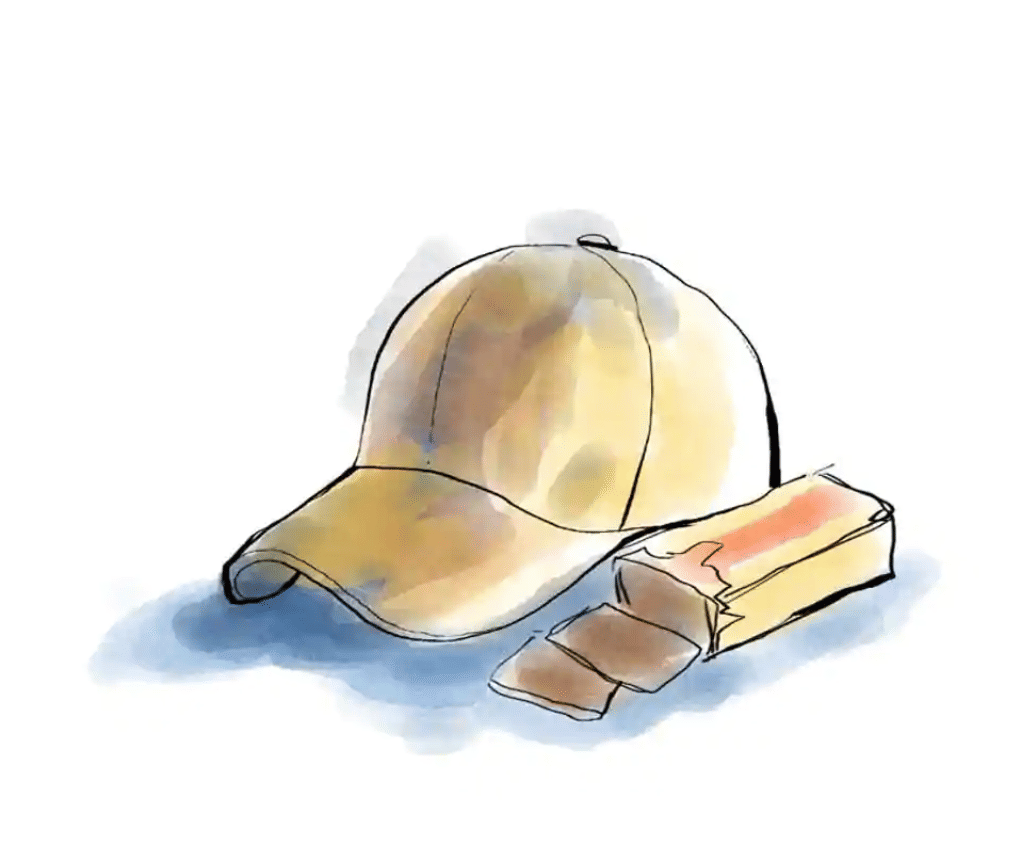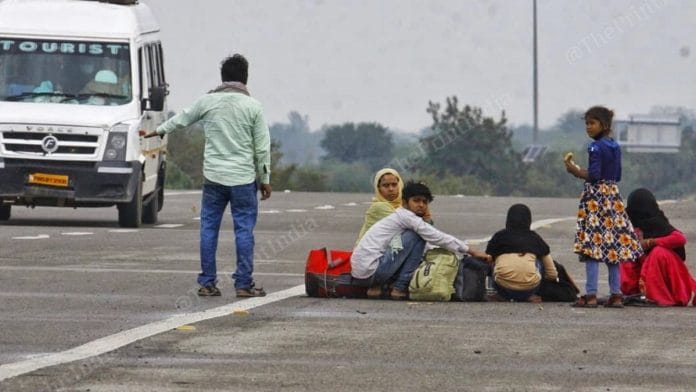Bhubhaneshwar/New Delhi: On April 1, Mahesh Jena followed his usual pre-dawn routine, but with an unusual plan in mind.
At around 4am, after enduring a sleepless night, Jena, a slightly built 20-year-old with a shaven head and a boyish face, put on his blue jeans, his blue-and-gray striped t shirt, and his worn-out rubber slippers. He put his backpack on his shoulders, and happy with its weight, he slipped out of his tiny room and got on to his bicycle — a heavy relic of a bike with a 22-inch frame — and started pedalling. It was dark. Usually, he would head for his factory, a little over 10km away in the industrial zone of Sangli in Maharashtra.
This time, he was headed home — to a small village called Bhanra in Odisha’s Jajpur, nearly 1,700km away.
His backpack had a blanket, a quilt, a change of clothes, a few packets of biscuits (Parle G, Marie, and cream), a few sachets of soap, a steel tiffin Jena usually carried to work, bottles of water, and just under Rs 3,000 in cash. The bag weighed a little more than 10kg. He had no maps, and no phone. He felt no fear and little doubt. His head was clear — he would keep going till he reached home. If the cycle broke down, he would walk.
Anything was better than the uncertainty and dread that had gripped him and his colleagues — all migrant labourers working in the metal and plastic factories in Sangli’s industrial zone, many of them from Odisha — ever since a national lockdown was announced on March 24.
“The rumour was that all the factories would close for five months at least,” Jena said. “Everyone was very scared. How we will earn? How will we eat? How will we pay room rent? No one said anything to us about how we will survive, whether we will be paid.”
On the news, Jena saw the crowds of migrant labourers leaving on foot. Many of his co-workers were talking of doing the same.
“For 4-5 days, we were under great stress, we did not know what to do. I could not sleep. Do I go or not? Will I be able to make it? If I walk, I will cover 50 km a day… that will take me over a month! But then I thought, if I cycle, maybe I can do 100km or more in a day. That’s about 15 days. Not too bad.”
Sitting and fretting in his rented room, Jena made his decision. On March 29, he called Manoj Parida, a cousin whose house he had grown up in, now a lineman in the Northern Electricity Supply Company in Jajpur district, and told him the plan.
“I told him to stay back,” Parida said. “When he said he had run out of money, I sent Rs 3,000 through Google Pay. No one at home thought that he would cycle his way from Maharashtra. We thought it was almost impossible.”
Jena decided not to tell anyone else. His plan was simple; try following the same route he took from Odisha to Sangli, but in the opposite direction.
When he was first picked up by a contractor in his village, Jena and a group of men took a bus from Jajpur to Bhubaneshwar, a four-hour ride. From there, they took the Konark Express, which connects the eastern part of India to the western part, a distance of 1,932km from Bhunaneshwar to Mumbai, which it covers in 37 hours, 15 minutes. They got off at Solapur, a city in south-western Maharashtra close to its border with Karnataka, a day-and-a-half later. From Solapur, they took another bus to Sangli, a 12-hour journey.
“That was going to be my route,” Jena said. “I did not think of anything more. I did not think about food, or water, or whether the cycle would last.”
Also read: Rotis, mobile recharges, carrom boards — how Kerala fixed its migrant worker anger
First-time migrant
Jena was born near a cycle market in Ludhiana. His parents ran a pavement food stall in the city. Struggling with money, they sent Jena back to their village in Odisha when he was 9 years old, to live with his uncle. In school, Jena had ambitions to join the army. Five years ago, his father had tried to kill himself. With less than Rs 500 in his pocket, Jena says, he boarded a train to Delhi and from there made his way to Ludhiana to see his father. Last year, his father was diagnosed with a kidney disease. Then an injury to his spinal cord left him debilitated.
“I have two younger brothers, a younger sister,” Jena said. “My turn had come, I needed to earn. We were very badly off, no money, no house to call our own.”
Nine months ago, Jena quit school without giving his Class 10 exams, and became one of the approximately 120 million migrant labourers in India.
Chinmay Tumbe, an assistant professor of economics at the Indian Institute of Management in Ahmedabad and the author of India Moving: A History of Migration, calls it the “the world’s largest and longest voluntary stream of migration.” Uttar Pradesh, Bihar, and Odisha are the three main sources of this mass migration.
With no particular skills, Jena first found work in a plastics factory, loading and unloading consignments.
“I felt like my neck would break,” he said. “I hated it.” He became an apprentice in a metal factory making water pumps, despite many of his friends warning him of the dangers of the job. Early on in his apprenticeship, he says, he followed a commotion to find that a worker had died at a foundry after being buried under huge slabs of iron.
“I have seen people working there losing hands and legs,” Jena said. But he soldiered on. He learnt to cut, temper, and weld iron. For five months, he got no money. In January, he found a job that paid him Rs 12,000 a month at Jsons Foundry, which makes metal castings for the oil and gas industry.
On the road
By the time the sun was out, Jena had passed by the densely populated city of Miraj (which forms a single municipality with Sangli) and taken a sharp northward turn on NH 160. On Day 1, he hoped to make it to Solapur, cycling all day, and resting when the sun went down. Soon after Miraj, he left NH 160 and got on to the Maharashtra state highway numbered 161. For hours, he rode at a steady clip past sugarcane fields. The first river he crossed was the modest Agrani, a stream that was successfully revived in 2017 to help alleviate the troubles of this drought prone area.
When evening came, Jena found that he was not tired. In fact, he was enjoying the unhurried cadence of his cycling, the solitude of the road. He kept going.
When he finally stopped for the night — at a temple — he was barely 40km from Solapur, and had cycled more than 150km. The only problem he faced on Day 1 was a puncture.
A group of villagers asked him where he was coming from, and decided to help on hearing his story.
“They let me sleep at the temple, got me food, got me milk, I got my puncture repaired,” Jena said.

“I went to sleep thinking, I’ve done 150km! I can do this!”
By that time, the contractor who brought Jena to Sangli, and a few of Jena’s colleagues had gone to the local police station to report his disappearance.
Checkposts
The first day set a pattern that would repeat itself with a regularity that is extraordinary in itself. In covering the breadth of India alone on a cycle, Jena was barely troubled. He was helped everywhere he asked for it. He cycled all day and well into the night.
“Nothing scary happened to me, and I never had a problem with food or water,” he said. “I began to enjoy myself. Especially going downhill in the hilly areas!”
On he went on Day 2, from Solapur past the massive medieval fort of Naldurg with its beautiful lake, past shuttered sugar mills, past the corpses of dogs killed in road accidents, crossing into Karnataka somewhere in the middle of the day and realising it only after being stopped at a police check post.
“only fear was the police,” Jena said.
But even the police did not detain him, helping him on his way with food and water (it is worth noting here that Jena was lucky that he was not carrying the virus, or this story would have taken a very different route, tracing a “superspreader”.)
“I was stopped many times at police check posts,” Jena said, “and each time I told them what I was doing, and I said, ‘I can’t possibly go back, you can keep me here if you like, or you can let me keep going’. They always let me go.”
Also read: Yamuna banks as home, once-a-day langar: How hundreds in Delhi spent 4 days before CM acted
The man and his cycle
If Jena had a nemesis, it was the rate at which he suffered punctured tires — at least twice every day.
“It got me down,” he said. “When I started, I had no idea this was going to happen so many times.
On Day 3, as he was approaching Hyderabad, Jena got lost and went nearly a 100km in the wrong direction. At a village, a man told him a short-cut through hilly, forested terrain that would take him back to NH 65, and cut the distance by more than half. As he climbed the hill, the cycle’s rear tire got cut on a sharp rock. He climbed the rest of the way, around 10km, on foot.
“At the top of road, I got back on to the cycle, balanced myself, checked my brakes, and then just let go,” Jena said. “It was wonderful, speeding all the way down like that on that empty road.”

It was another 30km on foot before he found a village, though there was no one outside. He had to knock on doors before he found someone to fix the puncture.
“Less than half hour later, the tire burst completely.”
Again, Jena walked. At the next village, the owner of the cycle shop replaced the tube on his rear tear with a new one, but charged only for the cost of the tube itself.
Soon after, he was on the highway skirting the mega city of Hyderabad, a third of his way done.
“Now it was a straight, straight road to Vijayawada.”
On this road, Jena’s path crossed that of a large group of migrant labourers on foot.
“They were from Uttar Pradesh and Bihar,” Jena said. “They said that they had no money and they had no choice but to try and walk back to their villages. Some of them asked me if I would make it all the way to Odisha on a cycle.
“I said, ‘with Bholanath on my side, I surely would.’” Bholanath is another name for Lord Shiva, a popular Indian deity.
As he glided past the walkers, Jena congratulated himself on choosing to cycle.
“I was not going to let go of the cycle at any cost,” he said.
“Even if I had to walk with the cycle, I would walk with it, but I was certain that I wouldn’t let it go. If trains restarted, I would take the cycle on the train. If buses restarted, I would put it on the bus. I had a fear that anything could be stopped any time, and in that fear, my one hope was my cycle.”
On Day 4, Jena reached Vijayawada, where it dawned on him that perhaps his family would be worried about his disappearance. He borrowed a phone from a stranger and called his sister.
“When he called up, I was so angry for a moment,” said Mitali, his sister. “We were all distressed at home for days, with no news of him. I was angry with his stupidity, but we were also relieved. I told him, reach Jajpur and call again.”
Jajpur was still nearly 900 km away, but by now Jena was in a trance. It was him, his cycle, and the road. For the next few days, he even forgot about the one thing that he usually obsessed about — where will money come from? Without a phone, he did not even have the distraction of making or receiving calls, or watching videos, or listening to music, or making photographs.
He noticed that his route was becoming particularly beautiful, often densely forested, hilly, the roiling Krishna river on his right. He was going past the reserve forest of Kondapalli.
“There was lots of beauty, it was amazing,” he said. “I felt like I could die doing this alone, and if I did die, it would be okay. If I lived, great, I would cycle.”
Past the gigantic barrage on the Krishna at Vijayawada, Jena switched to NH 16, curving sharply upwards along the east coast towards his home.
He began Day 6 by going past Srikakulam and crossing the bridge over the Nagavali river, which collapsed dramatically two years ago in June after the river flooded.
By the end of the day, he crossed into Odisha, near the nondescript village of Gudipadar in Ganjam district. Soon he was going past the gorgeous town of Ganjam, where the Rushikulya river enters the Bay of Bengal, past where the Olive Ridleys nest, though he says he never noticed the sea, just a shimmer of blue too far to his right as he glided past familiar Sal forests. Then the road turned gently inland, and Jena was cycling past the oceanic Chilika lake.
But it was only at Bhubaneswar, on Day 7, that he finally felt the relief of being on home turf. There was still a 100km to go.
“I never fell ill except the pain that I felt on my feet and thighs due to the long hours of cycling,” Jena said. “I did suffer blackouts a couple of times. When the pain became unbearable, I stopped and rested. I felt very happy when I reached Bhubaneswar.”
On the evening of April 7, he reached Jajpur town, just 5km from his village.
He is still stuck there.
“I called my uncle when I reached Jajpur and he told me to go to the police and tell them that I should be taken to the medical centre for quarantine,” he said , “and that’s what I did.”
In quarantine for 14 days, Jena is yearning for home. He gets to see his uncle and his family every day, and they bring him food and talk from afar.
The police have taken his cycle into custody too.
“The police said, ‘we can’t trust him; someone who can cycle from Maharashtra, can easily escape from here’,” he said.
It took him seven days to cover nearly 1,700km, roughly 242 kms a day.
Is there something from his road trip that he regrets?
“I was sure that I would meet ghosts,” Jena said. “I did not see a single one.”
By special arrangement with ![]()
Also read: India’s next problem: Convincing frightened workers to return to the cities







A great story! Bless Mahesh Jena, and wish he and his family are safe. ? Warmed my heart to read this tale of extraordinary human endurance and courage. Thank you ThePrint for such a gem. ?